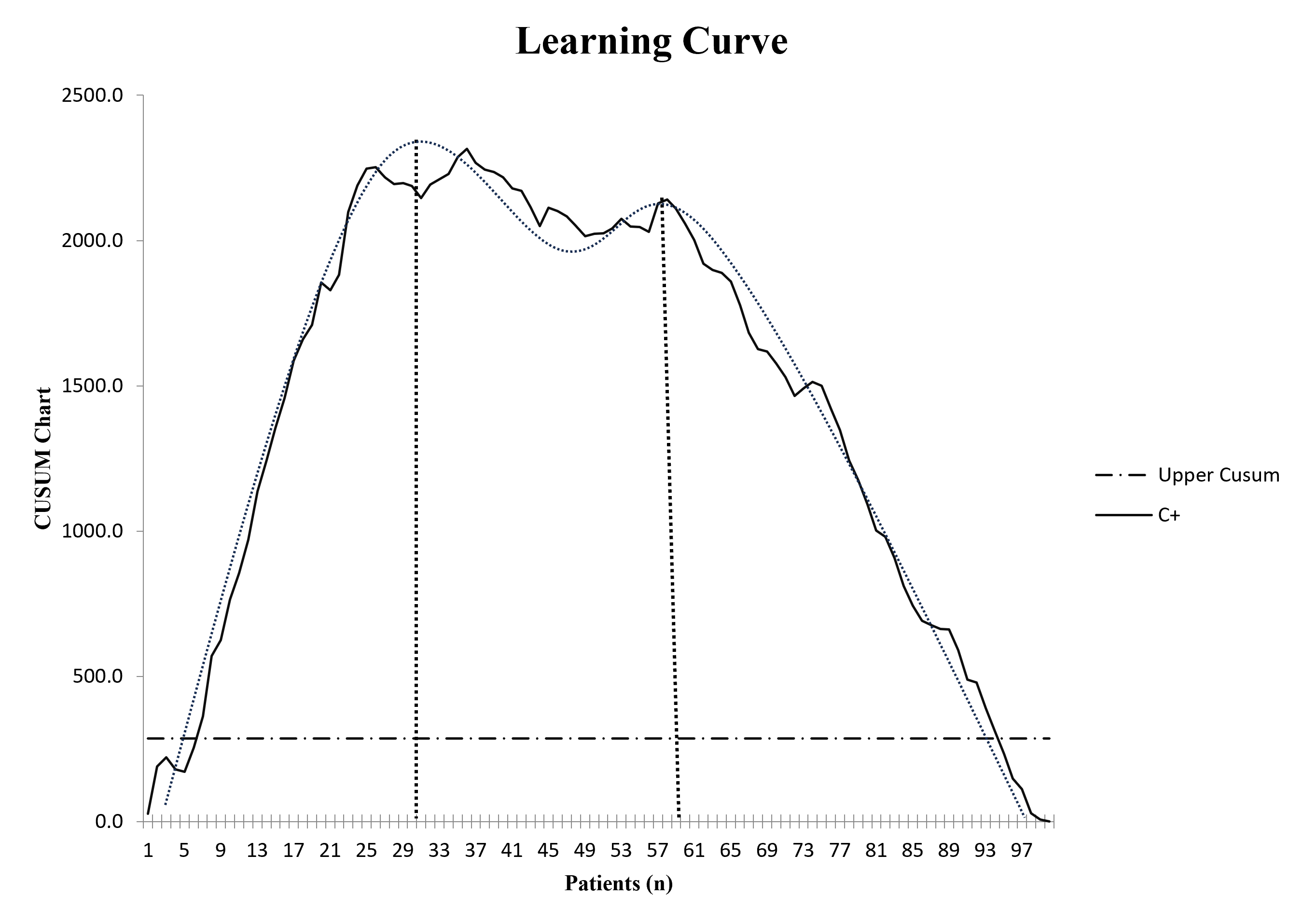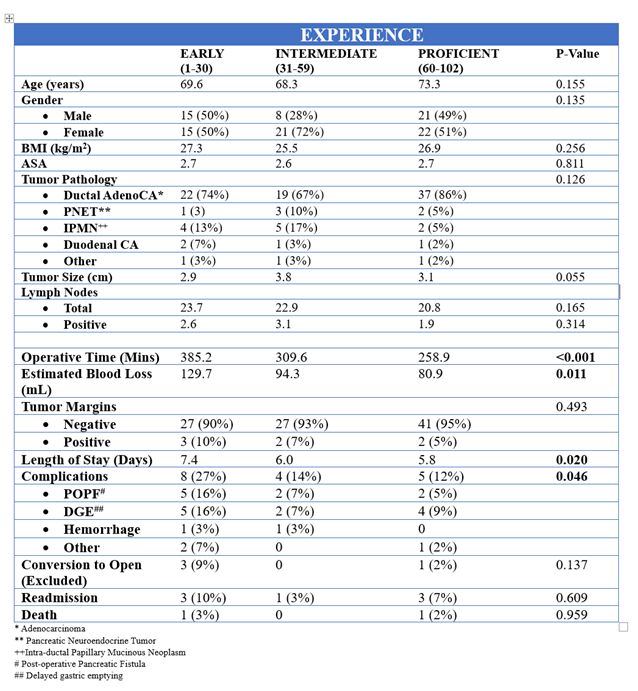Back to 2024 Abstracts
ROBOTIC PANCREATICODUODENECTOMY: DEFINING LEARNING CURVE AND THE IMPORTANCE OF PROFICIENCY.
Mark G. Hall
*, Ali Ahmad
Surgical Oncology, University of Kansas School of Medicine Wichita, Wichita, KS
Introduction: Robotic pancreaticoduodenectomy (RPD) has gained increased attention in recent times. The intrinsic complexity of the procedure has hindered widespread adoption. The objective of our study was to define the learning curve associated with RPD and the impact of proficiency on outcomes.
Methods: At our institution, 106 patients underwent RPD between 2017 and 2023. Retrospective analysis was performed to define demographic, tumor and operative variables. The learning curve was determined using CUSUM analysis. Univariate and multivariate analyses were conducted to determine its impact on short-term outcomes.
Results: From 106 patients initially identified, 102 patients underwent a fully robotic PD. Learning curve was found to comprise of 3 phases i.e. early (patients 1-30), intermediate (31-59) and proficient (60-102). Patient demographics and tumor characteristics were similar throughout. Progress to proficiency was associated with decreased operative time (385 vs 309 vs 259 mins, p<0.001), lower operative blood loss (EBL, 130 vs 94 vs 81mL, p=0.011), reduced length of hospital stay (LOS, 7.4 vs 6.0 vs 5.8 days, p=0.02) and decreased overall complication rate (27% vs 14% vs 12%, p=0.046). These differences were confirmed on multivariate analysis, affirming the independent relationship of proficiency with improved outcomes. No difference was seen in peri-operative mortality (3% vs 0% vs 2%) or 30-day readmission rate (10% vs 3% vs 7%).
Conclusion: The learning curve of RPD comprises of 3 distinct phases (early, intermediate, and proficient). Proficiency is associated with significantly reduced operative time, improved EBL, lower LOS, and overall complication rates. Adequate training and appropriate patient selection may allow for safe execution of this procedure during the early phase of the learning curve.


Back to 2024 Abstracts

